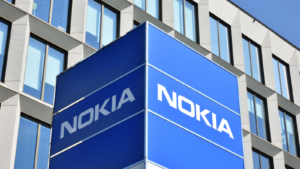
At this writing, current inflation rate is 3% over the past 12 months. That’s the reading as of the end of June. So, in searching for high-yield dividend stocks beating inflation, I need to identify those with dividend yields above 3%.
Fortunately, there are plenty of options in that range for investors. As always, it’s best to search within what is considered the healthy range of 2% to 6%. That’s a good rule of thumb, although there are exceptions to the rule.
Consumers are fed up with inflation, although there are signs that it is continuing to abate. We are well above the target rate of 2%, driving investors and consumers to seek solutions. One solution is identifying and investing in stocks with dividends above the inflation rate. Doing so effectively cancels the negative effects of inflation to some degree.
AbbVie (ABBV)

AbbVie (NYSE:ABBV) is one of the better-known pharmaceutical stocks available to investors. It’s a stock well known to provide a strong dividend and is currently yielding 3.7%. Additionally, AbbVie shares are expected to appreciate in value from their current level of $168, with a consensus target price of $185.
So, by investing in ABBV you will effectively outpace inflation by 0.7% while also being exposed to substantial upside.
The company has been and continues to be one of the better examples of successfully pivoting from blockbuster drug revenues. The company continues to grow slightly as it deals with the effects of Humira coming off patent and declining sales.
The company continues to highlight Rinvoq and Skyrizi’s early success. Investors should also note that the company’s oncology and neuroscience segments are growing rapidly.
Abby seems to be moving from strength to strength and has done so impressively. Many pharma companies fall off rapidly and never regain their former glory when facing similar situations.
Cisco Systems (CSCO)

Generally speaking, the reasoning for investing in Cisco Systems (NASDAQ:CSCO) stock is a combination of stability and broad tech exposure. The company is a well-known seller of networking hardware and includes a dividend yield of 3.4%. Cisco Systems sells to a broad sales base that includes many of Silicon Valley’s largest firms and provides stability through a dividend last reduced in 2011.
Those are all good reasons to consider investing in Cisco Systems. Furthermore, the company is widely expected to benefit from the continued development of artificial intelligence.
However, let’s dig a little deeper to understand Cisco Systems’ current opportunities. For one, investors are excited that the company is shifting toward a greater percentage of software sales overall. That’s important because software sales are associated with repeat purchases, whereas hardware sales tend to be one-and-done.
On the hardware side, Cisco Systems is positioned relative to the burgeoning LoRa and Lo RaWAN opportunities. So, investing in Cisco Systems will help you beat inflation, and its also one of the better-regarded dividend stocks at the moment.
Pfizer (PFE)

Pfizer (NYSE:PFE) is a company in the midst of a massive post-pandemic hangover. Declining Comirnaty and Paxlovid revenues resulted in a 19% top-line contraction in the first quarter. The natural conclusion would be to ask why investors should consider Pfizer stock at the moment.
There are several answers to that question. Operational revenues grew by 11% when stripping out the effects of Comirnaty and Paxlovid. The company is also on track to reduce costs by $4 billion by the end of the year. That will help to stop the bleeding.
That said, the real question is where will Pfizer find growth as it moves beyond blockbuster pandemic success. Part of that answer lies in its acquisition of Seagen. Pfizer has the potential to pivot from a pandemic juggernaut to an oncology juggernaut. Seagen is a leader in antibody-drug conjugate therapy. Oncology is one of the fastest-growing and most promising areas of medicine.
Pfizer is now positioned to produce blockbuster therapeutics in that area. Those willing to chase those opportunities will be rewarded with dividends yielding 5.8% currently.
The Williams Companies (WMB)

The Williams Companies (NYSE:WMB) is a strong stock to consider. It offers a high-yield dividend of 4.5% that will help investors beat inflation.
It’s also a company that is succeeding in the transition toward cleaner energy. The Williams Companies operate natural gas infrastructure, delivering relatively clean burning fossil fuel throughout the U.S. Natural gas produces fewer emissions than coal or oil and produces an equivalent amount of energy.
The Williams Companies operate the pipelines and infrastructure that deliver natural gas across the U.S. The company is doing so successfully, given that share prices have risen more than 21% in 2024. they’re also expected to continue rising higher.
Although the company performed poorly in the most recent quarter, it continues to focus on delivering strong, stable shareholder returns and invests in storage facilities that will allow it to satisfy rising LNG export demand.
Medtronic (MDT)

Investors would be hard-pressed to find a more reliable stock than Medtronic (NYSE:MDT). If we’re talking about high-yield dividend stocks to beat inflation with low risk, Medtronic should be among the first choices.
The medical devices manufacturer currently offers a stock with a dividend yielding 3.6%. The company last reduced that dividend in 1978 and has a healthy payout ratio of 0.5x. It’s about being as certain and reliable as dividends can be.
The company’s revenues grew by 3.6% in 2023. Looking forward, that’s roughly the kind of growth investors should expect. However, Medtronics’ earnings are expected to rise substantially in 2025. Increased earnings could logically prompt an increase in dividends.
Shares currently trade for $77 but are expected to rise above $91. Buying Medtronic exposes investors to substantial potential returns. Although analysts don’t love the company across the board, it is a good choice for beating inflation nonetheless.
Diamondback Energy (FANG)

The energy sector is far from dead as Diamondback Energy (NASDAQ:FANG) stock continues to prove in 2024. The oil exploration and production company has thrived in 2024, rising by nearly 30%.
Shares have risen above $200 and benefit from a consensus price of $210. One analyst believes that share prices could rise to $255. Despite the strong price surge upward, Diamondback Energy continues to pay a dividend of 4.4%. It is a great energy stock for investors who are trying to beat inflation through the stock market.
Oil prices have been climbing for the past four weeks and are expected to continue doing so in the second half of 2024. That makes the Permian Basin-based production of Diamondback Energy in higher demand. U.S.-based oil companies do not want to be held hostage by Middle East producers, making Diamondback Energy’s domestic production much more attractive. The distance to the market is much lower and should continue to benefit Diamondback Energy throughout 2024.
Nokia (NOK)

Nokia (NYSE:NOK) continues to be an intriguing choice for investors. The stock gained much notoriety in the past few years, especially in light of the continued emergence of 5G. Nokia is, more broadly, a company that provides network infrastructure, cloud services, and mobile networks.
The dividend yields 3.6% currently. It continues to provide some health signals including a payout ratio of 0.4x. That said, Nokia did reduce its dividend in 2022. It’s clearly not the most reliable stock on this list of dividend stocks to beat inflation.
However, Nokia is inexpensively priced, trading for less than $4. It’s a penny stock with outsized growth potential notable within the segment.
Furthermore, there are some things to like about the company. For example, Nokia’s gross margins increased to 48.6% during the first quarter. Nokia is a reasonable choice as it continues to chase 5G opportunities and its pricing strength improves.
On the date of publication, Alex Sirois did not have (either directly or indirectly) any positions in the securities mentioned in this article. The opinions expressed in this article are those of the writer, subject to the InvestorPlace.com Publishing Guidelines.
On the date of publication, the responsible editor did not have (either directly or indirectly) any positions in the securities mentioned in this article.



